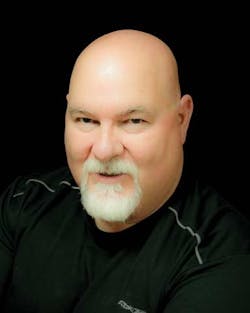Retailing is a complex endeavor. I recall my first day working at a retail sales counter in a high-volume location. Customers came streaming through the doors in the morning, the phone never stopped ringing, and it seemed chaotic.
It was easy to lose track of time, deadlines, cars, customers and commitments.
I didn’t know it then, but the regional vice president put me in this particular store to intentionally overwhelm me. I remember making simple mistakes, like leaving the work order on the front seat of the car after pulling the vehicle out of the service bays. In the overall scheme of things, once you lose track of the work order, you lose track of the sale.
When the customer called later to check on the progress of his car, nobody knew anything because they couldn’t find the work order. The chain of communication was broken, the store protocol had been severed, and customers and counter people got edgy with each other due to the lack of seamless communication. Once I learned the proper protocols and procedures, it made the chaos seem much more controlled and manageable.
When I became a district manager, the rules changed. Everything seemed more complex because of the additional personnel, additional customers, additional expectations, and the general additional everything. As a new district manager, I became somewhat confused by the complexity, and I found myself focusing on the areas where I was most proficient.
The problem, however, was that I was not proficient in enough areas to actually be successful overall. I needed to connect more dots, and I didn’t know how. I was working hard, but was not as successful as the job or company required. I was very fortunate to work for experienced and skilled individuals who helped me see the bigger picture.
Lessons learned
One supervisor taught me about people, process and profit. The first thing he hammered home was how to make money. He taught me that it all starts with the sale; you have to generate sales. The key is taking sales dollars and turning them into profit dollars. He’d say, “I don’t care what business you’re in, this never changes.”
• Sales x gross profit percentage = gross profit dollars.
• Gross profit dollars – operating expenses = operating profit.
He then, by example, showed me how a 1% increase in tire gross profit, or a 5% increase in service sales, or a reduction in operating expenses, became operating profit.
Because of the complexity and the diversity in running retail locations, I found that from time to time I needed a tune-up. It was easy for me to lose focus on the essentials. The purpose of this article is a reminder that as you move forward, you may find as I did, that as fast as you lose focus, you can regain it.
Keep your focus
After learning the key formula to operating profit, I soon learned several key, daily activities that helped me and my team remain focused and generate the necessary results. We get paid for results!
The five top-level focus points:
1. Sales and operational execution
2. Marketing efficiency and effectiveness
3. People: deployment of workforce
4. Experiences: delivery of excellent customer service
5. Loyalty: employee and customer satisfaction
Store sales and execution; not every sale generates high gross profit percentages, but every sale generates some gross profit dollars, and the dollars matter. Percentages are for measurement; dollars are for stacking. More gross profit dollars, more gross profit.
Beware of activities that are rather seductive; marketing, advertising, promotional activities, etc., spending money can be seductive. In a store, too much time and attention can be given to these activities which divert attention from cars on the hoist, and potential dollars slip through the service bays.
People and deployment are so very critical. I’ve learned that sometimes you can have too many superstars in one store. A little healthy competition is good, but often too much competition can be detrimental to the emotional health of a store. The right chemistry is important, the right chemistry with the employees and the customers.
Loyal employees and loyal customers are critical to a successful business. Winners win, nobody wins alone! ■
Wayne Williams is president of ExSell Marketing Inc., a “counter intelligence” firm based in La Habra, Calif. He can be reached at [email protected].
To see more Counter Intelligence columns, check out:
5 Tips to Improve Your Likability: Win More Sales and Avoid Discounting
A Simple Technique to Compete with the Big Boys
Women Buy Tires, Too -- They Have the Numbers, the Influence and the Shopping Skills

